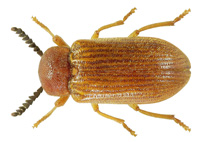Abstract
As part of a survey of mammal and bird nests, new species, new male stages, and some feeding observations have been collected from what was formerly called the Androlaelaps ulysses group. As many features of this group are consistently different from Androlaelaps, and also from Haemolaelaps where it was formerly placed, this group is here elevated to Ulyxes new genus, and U. autolycus, U. euryclea, and U. theoclymenus are described as new species. This genus has a broad range of feeding behaviour spanning intranasal parasitism, nidicolous parasitism, and at least one species is a nidicolous predator. Its host range is broad; two new species are shown here to cohabit with parrots while most remaining species associate with mammals. In contrast to the variation in feeding behaviour, Ulyxes spp are associated with a narrow range of nest types, being confined to arboreal nests, usually tree hollows (rarely fallen logs), and on the parrot or mammal hosts that use them. Ulyxes spp show a remarkable variability in male cheliceral development, which assorts according to feeding behaviour. There is a strong contrast between male chelicerae of predatory and parasitic species that has not been previously observed in such a compact dermanyssine genus. Previously male cheliceral morphology was thought to be conservative enough to provide diagnostic characters at suprageneric rank. For systematics, these findings complicate previous attempts to recognise male mouthparts as reliable features marking higher-level natural groups that include dermanyssoid vertebrate parasites. For evolutionary studies, this may be relevant in seeking examples of transitions to, or away from, parasitism.

